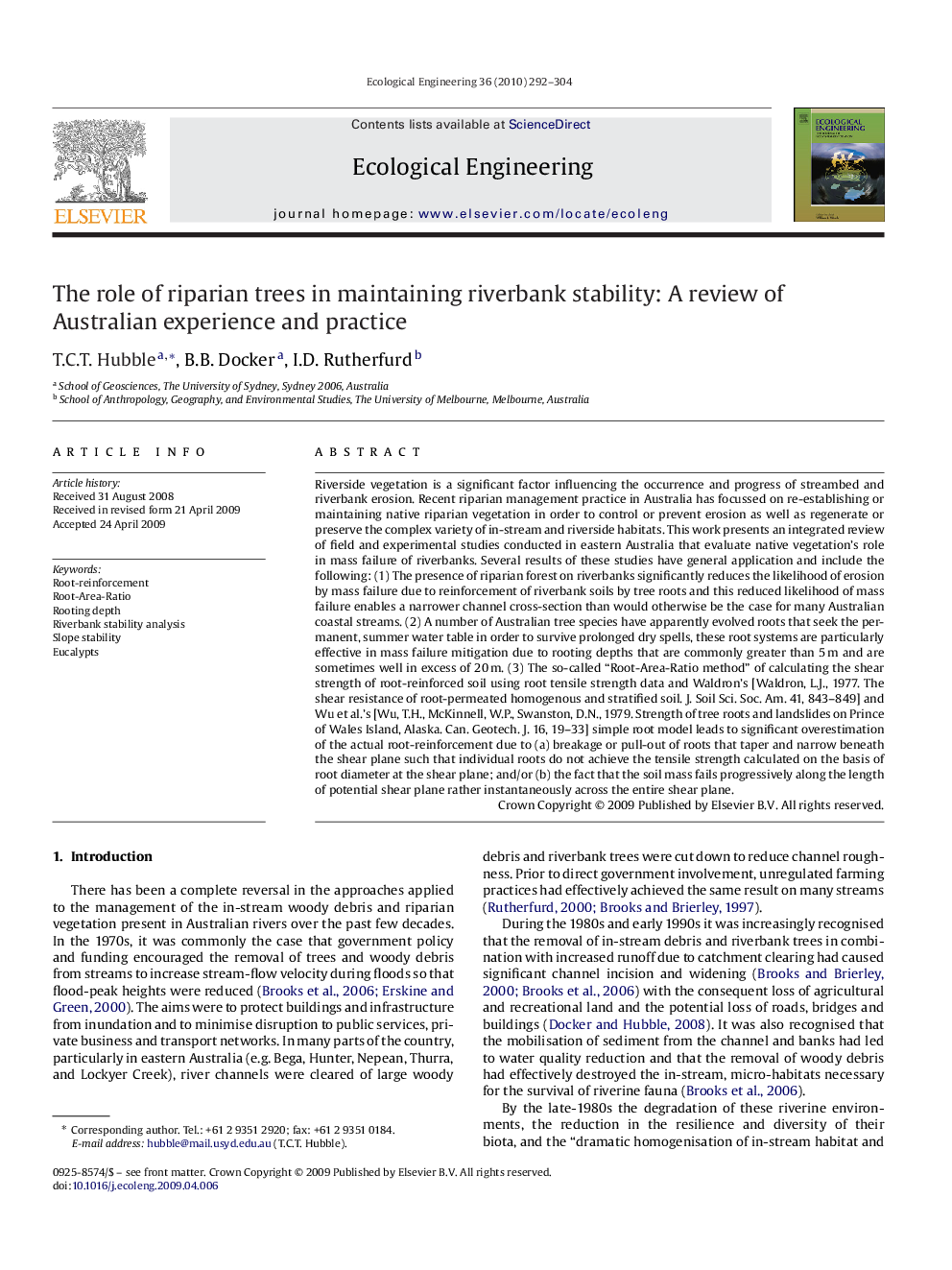| Article ID | Journal | Published Year | Pages | File Type |
|---|---|---|---|---|
| 4390648 | Ecological Engineering | 2010 | 13 Pages |
Abstract
Riverside vegetation is a significant factor influencing the occurrence and progress of streambed and riverbank erosion. Recent riparian management practice in Australia has focussed on re-establishing or maintaining native riparian vegetation in order to control or prevent erosion as well as regenerate or preserve the complex variety of in-stream and riverside habitats. This work presents an integrated review of field and experimental studies conducted in eastern Australia that evaluate native vegetation's role in mass failure of riverbanks. Several results of these studies have general application and include the following: (1) The presence of riparian forest on riverbanks significantly reduces the likelihood of erosion by mass failure due to reinforcement of riverbank soils by tree roots and this reduced likelihood of mass failure enables a narrower channel cross-section than would otherwise be the case for many Australian coastal streams. (2) A number of Australian tree species have apparently evolved roots that seek the permanent, summer water table in order to survive prolonged dry spells, these root systems are particularly effective in mass failure mitigation due to rooting depths that are commonly greater than 5Â m and are sometimes well in excess of 20Â m. (3) The so-called “Root-Area-Ratio method” of calculating the shear strength of root-reinforced soil using root tensile strength data and Waldron's [Waldron, L.J., 1977. The shear resistance of root-permeated homogenous and stratified soil. J. Soil Sci. Soc. Am. 41, 843-849] and Wu et al.'s [Wu, T.H., McKinnell, W.P., Swanston, D.N., 1979. Strength of tree roots and landslides on Prince of Wales Island, Alaska. Can. Geotech. J. 16, 19-33] simple root model leads to significant overestimation of the actual root-reinforcement due to (a) breakage or pull-out of roots that taper and narrow beneath the shear plane such that individual roots do not achieve the tensile strength calculated on the basis of root diameter at the shear plane; and/or (b) the fact that the soil mass fails progressively along the length of potential shear plane rather instantaneously across the entire shear plane.
Related Topics
Life Sciences
Agricultural and Biological Sciences
Ecology, Evolution, Behavior and Systematics
Authors
T.C.T. Hubble, B.B. Docker, I.D. Rutherfurd,
